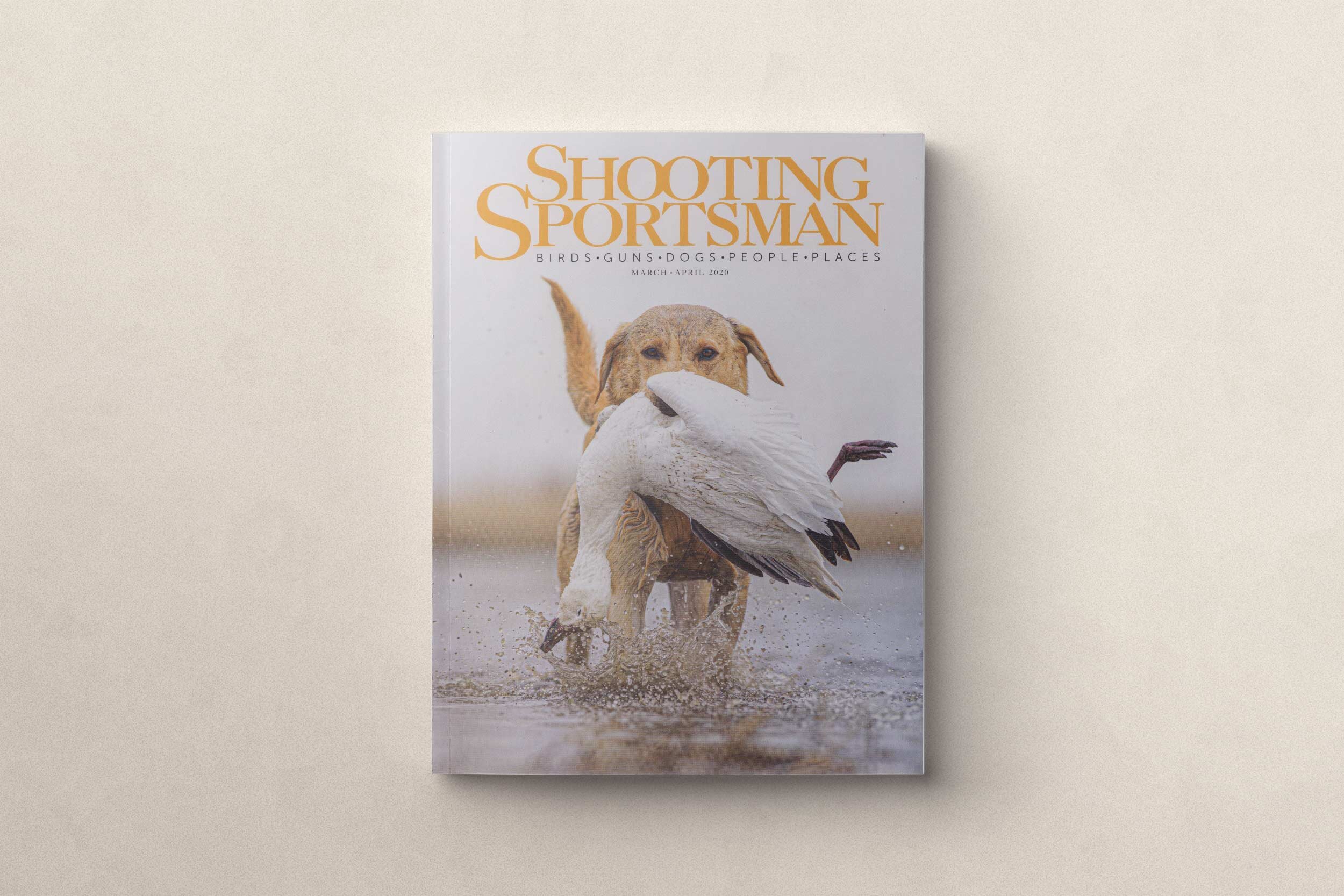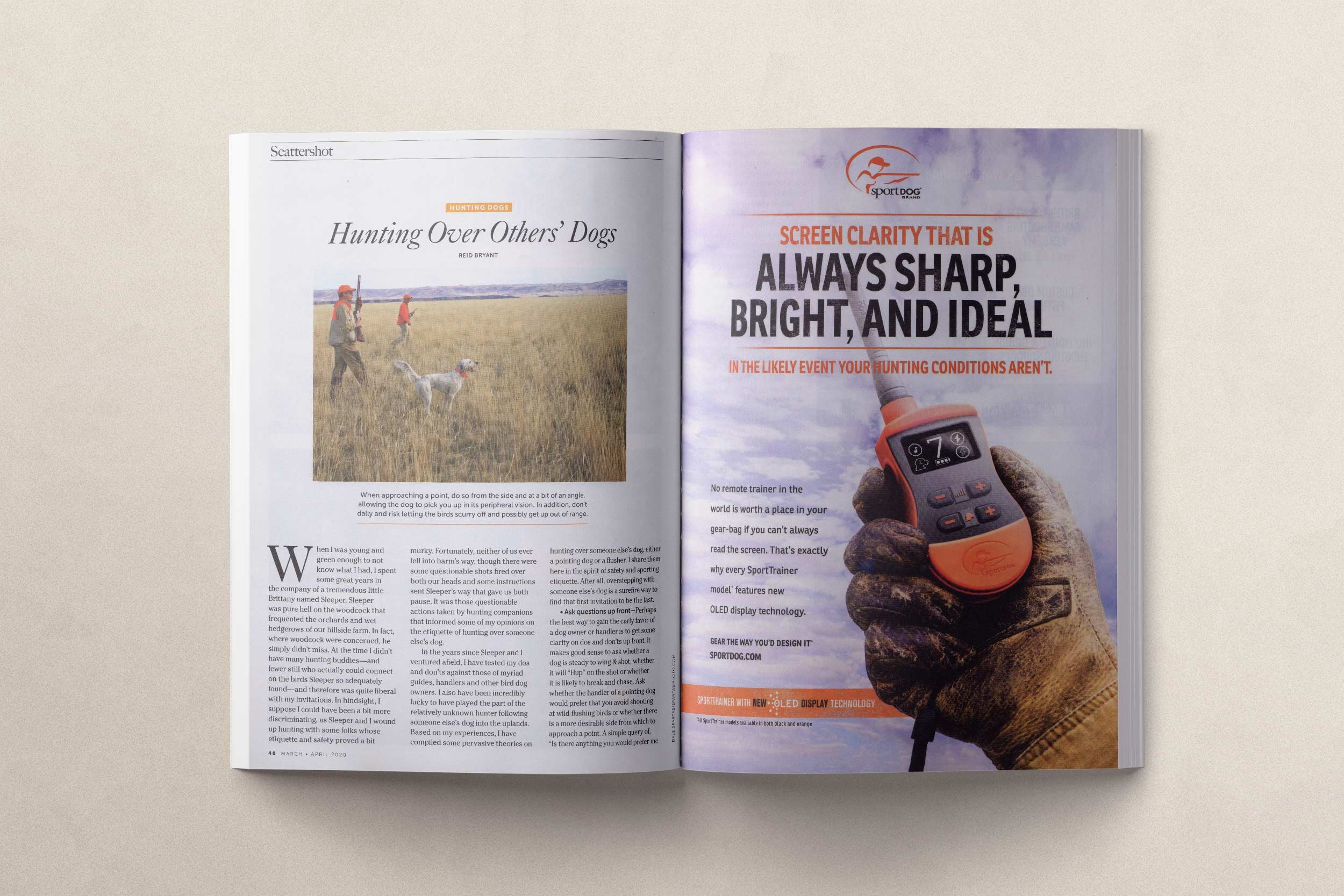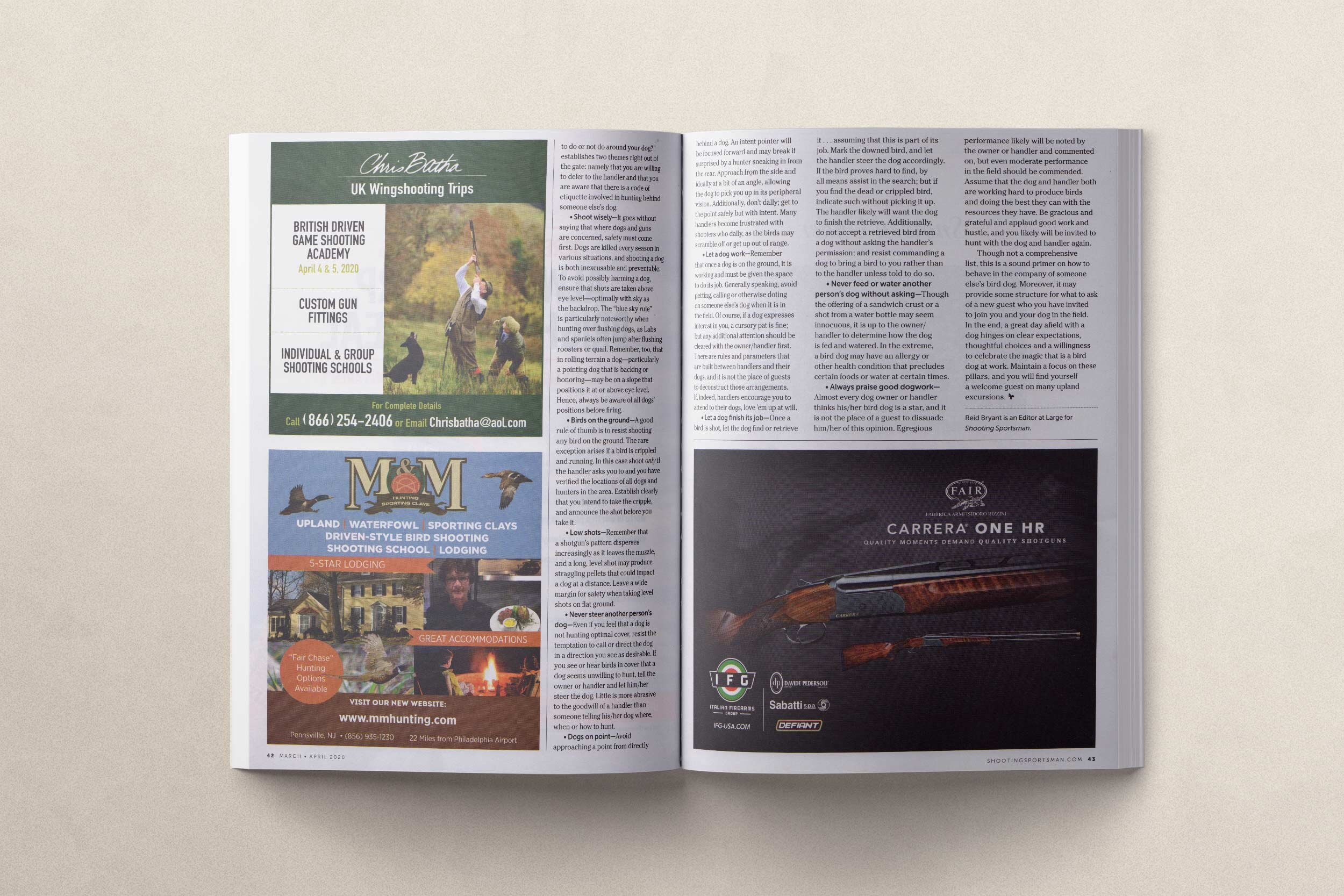Hunting Over Others’ Dogs
When I was young and green enough to not know what I had, I spent some great years in the company of a tremendous little Brittany named Sleeper. Sleeper was pure hell on the woodcock that frequented the orchards and wet hedgerows of our hillside farm. In fact, where woodcock were concerned, he simply didn’t miss. At the time I didn’t have many hunting buddies—and fewer still who actually could connect on the birds Sleeper so adequately found—and therefore was quite liberal with my invitations. In hindsight, I suppose I could have been a bit more discriminating, as Sleeper and I wound up hunting with some folks whose etiquette and safety proved a bit murky. Fortunately, neither of us ever fell into harm’s way, though there were some questionable shots fired over both our heads and some instructions sent Sleeper’s way that gave us both pause. It was those questionable actions taken by hunting companions that informed some of my opinions on the etiquette of hunting over someone else’s dog.
In the years since Sleeper and I ventured afield, I have tested my dos and don’ts against those of myriad guides, handlers and other bird dog owners. I also have been incredibly lucky to have played the part of the relatively unknown hunter following someone else’s dog into the uplands. Based on my experiences, I have compiled some pervasive theories on hunting over someone else’s dog, either a pointing dog or a flusher. I share them here in the spirit of safety and sporting etiquette. After all, overstepping with someone else’s dog is a surefire way to find that first invitation to be the last.
• Ask questions up front—Perhaps the best way to gain the early favor of a dog owner or handler is to get some clarity on dos and don’ts up front. It makes good sense to ask whether a dog is steady to wing & shot, whether it will “Hup” on the shot or whether it is likely to break and chase. Ask whether the handler of a pointing dog would prefer that you avoid shooting at wild-flushing birds or whether there is a more desirable side from which to approach a point. A simple query of, “Is there anything you would prefer me to do or not do around your dog?” establishes two themes right out of the gate: namely that you are willing to defer to the handler and that you are aware that there is a code of etiquette involved in hunting behind someone else’s dog.
• Shoot wisely—It goes without saying that where dogs and guns are concerned, safety must come first. Dogs are killed every season in every upland setting, and shooting a dog is both inexcusable and preventable. To avoid any potential of harming a dog, ensure that shots are taken above eye level—optimally with the sky as the backdrop. The “blue sky rule” is particularly noteworthy when hunting over flushing dogs, as Labs and spaniels often jump after flushing roosters or quail. Remember, too, that in rolling terrain a dog—particularly a pointing dog that is backing or honoring—may be on a slope that positions it at or above eye level. Hence, always be aware of all dogs’ positions before firing.
• Birds on the ground—A good rule of thumb is to resist shooting any bird on the ground. The rare exception arises if a bird is crippled and running. In this case shoot only if the handler asks you to and you have verified the locations of all dogs and hunters in the area. Establish clearly that you intend to take the cripple and announce the shot before you take it.
• Low shots—Remember that a shotgun’s pattern disperses increasingly as it leaves the muzzle, and a long, level shot may produce straggling pellets that could impact a dog at a distance. Leave a wide margin for safety when taking level shots on flat ground.
• Never steer another person’s dog—Even if you feel that a dog is not hunting optimal cover, resist the temptation to call or direct the dog in a direction you see as desirable. In the case that you see or hear birds in cover that a dog seems unwilling to hunt, tell the owner or handler and let him/her steer the dog. Little is more abrasive to the goodwill of a handler than someone telling his/her dog where, when or how to hunt.
• Dogs on point—Avoid approaching a point from directly behind a dog. An intent pointer will be focused forward and may break if surprised by a hunter sneaking in from the rear. Approach from the side and ideally at a bit of an angle, allowing the dog to pick you up in its peripheral vision. Additionally, don’t dally; get to the point safely but with intent. Many handlers become frustrated with shooters who dally, as the birds may scramble off or get up out of range.
• Let a dog work—Remember that once a dog is on the ground, it is working and must be given the space to do its job. Generally speaking, avoid petting, calling or otherwise doting on someone else’s dog when it is in the field. Of course, if a dog expresses interest in you, a cursory pat is fine; but any additional attention should be cleared with the owner/handler first. There are rules and parameters that are built between handlers and their dogs, and it is not the place of guests to deconstruct those arrangements. If, indeed, handlers encourage you to attend to their dogs, love ’em up at will.
• Let a dog finish its job—Once a bird is shot, let the dog find or retrieve it . . . assuming that this is part of its job. Mark the downed bird, and let the handler steer the dog accordingly. If the bird proves hard to find, by all means assist in the search; but if you find the dead or crippled bird, indicate such without picking it up. The handler likely will want the dog to finish the retrieve. Additionally, do not accept a retrieved bird from a dog without asking the handler’s permission; and resist commanding a dog to bring a bird to you rather than to the handler unless told to do so.
• Never feed or water another person’s dog without asking—Though the offering of a sandwich crust or a shot from a water bottle may seem innocuous, it is up to the owner/handler to determine how the dog is fed and watered. In the extreme, a bird dog may have an allergy or other health condition that precludes certain foods or water at certain times.
• Always praise good dogwork—Almost every dog owner or handler thinks his/her bird dog is a star, and it is not the place of a guest to dissuade him/her of this opinion. Egregious performance likely will be noted by the owner or handler and commented on, but even moderate performance in the field should be commended. Assume that the dog and handler both are working hard to produce birds and doing the best they can with the resources they have. Be gracious and grateful and applaud good work and hustle, and you likely will be invited to hunt with the dog and handler again.
Though not a comprehensive list, this is a sound primer on how to behave in the company of someone else’s bird dog. Moreover, it may provide some structure for what to ask of a new guest who you have invited to join you and your dog in the field. In the end, a great day afield with a dog hinges on clear expectations, thoughtful choices and a willingness to celebrate the magic that is a bird dog at work. Maintain a focus on these pillars, and you will find yourself a welcome guest on many upland excursions.
First Published in Shooting Sportsman Magazine


